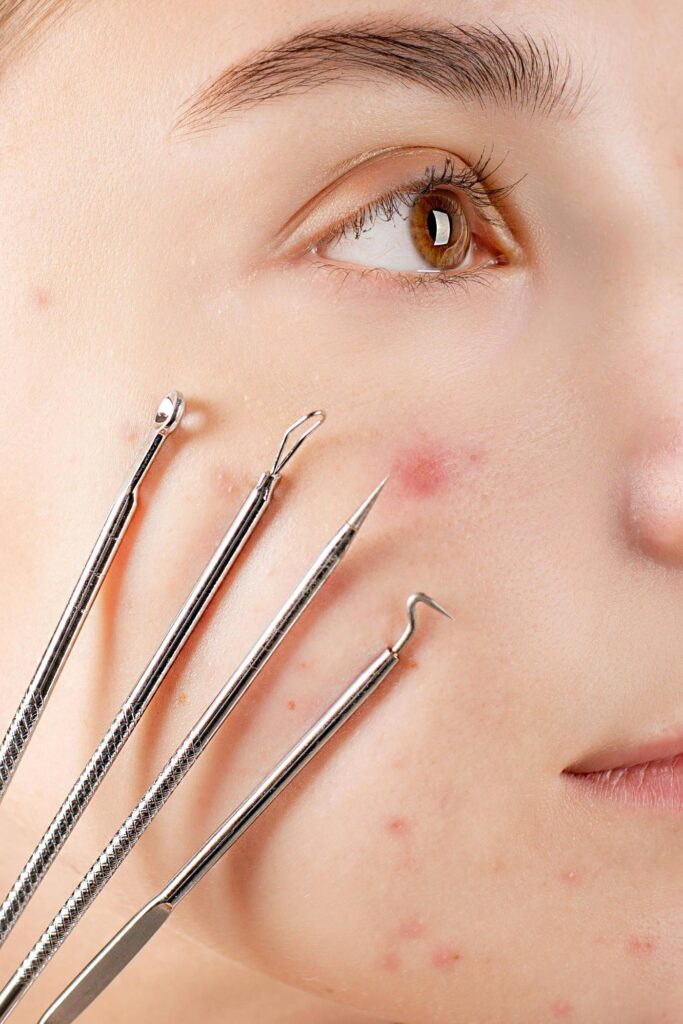Skin Care
The Truth About Skin Tag Remover for Wart Removal
In the field of dermatology, the desire for smooth, perfect skin frequently causes people to try a variety of treatments and solutions. Among these, using skin tag remover for wart removal has gained popularity as a fairly simple and accessible alternative. However, underneath the promise of easy eradication is a terrain of misinformation and misunderstanding.
While skin tag removers are intended to treat benign growths such as skin tags, their efficacy and safety in wart eradication remain debatable. Warts generated by the human papillomavirus (HPV) pose a unique problem due to their viral origin and diverse forms. As a result, the use of products that are not expressly designed for wart removal raises concerns about effectiveness, potential adverse effects, and long-term results.
In this article, we look at the facts of utilizing skin tag remover for wart removal. We hope to shed light on the risks and benefits of this unique strategy by reviewing scientific facts, expert perspectives, and anecdotal experiences. By unraveling the complexities of skin tag removal in wart therapy, we enable people to make informed decisions about their skin health.
Join us as we explore the subtleties of wart removal, distinguishing between fact and fiction, and revealing the truth behind the allure of skin tag removal products.

Understanding Skin Tags and Warts
Defining Skin Tags
Skin tags, sometimes called acrochordons, are small, harmless growths that commonly develop on the neck, armpits, and groin. They are normally flesh-colored or slightly darker, with sizes ranging from a few millimeters to a few centimeters. Skin tags are often soft and flexible to the touch, and they are neither uncomfortable nor damaging to a person’s health. While they are not indicative of skin cancer, some people may wish to have them removed for cosmetic reasons.
Recognizing Warts
The human papillomavirus (HPV) causes warts, which are tiny, rough, elevated skin growths. They can appear anywhere on the body, but their most typical location is on the hands and feet. Warts can be flesh-colored, pink, brown, or gray, and may have a lumpy or cauliflower-like look. Unlike skin tags, warts are contagious and frequently spread through skin-to-skin contact. While most warts are harmless, some HPV strains can cause genital warts and raise a person’s chance of acquiring certain cancers.
Wart removal is not recommended using skin tag removers like TagBand or dental floss. These procedures aim to cut off the blood supply to the skin tag, causing it to die and fall off. Warts, on the other hand, are caused by a virus and require a different type of therapy. Over-the-counter treatments for warts, such as salicylic acid or freezing kits, may be successful for some people, but it is critical to speak with a doctor before attempting any at-home remedies.
In conclusion, while skin tags and warts may look similar, they are caused by separate sources and require different treatments. Skin tag removers should not be used to remove warts; instead, consult a healthcare expert for a correct diagnosis and treatment.

Causes and Risk Factors
Skin tags and warts are two frequent skin disorders that can be irritating and unpleasant. They may appear similar, yet they have distinct causes and risk factors.
Factors Leading to Skin Tags
Skin tags are tiny, benign growths that usually develop on the neck, armpits, eyelids, and groin. They are more common in middle-aged and elderly people, and they may be more prevalent in those who are overweight or diabetic.
Friction is another element that might lead to the formation of skin tags. For example, skin-on-skin rubbing in the underarm area might lead to the formation of skin tags.
Genetics may also contribute to the formation of skin tags. If a person’s family history includes skin tags, they may be more likely to get them.
Wart Development and HPV
Warts are caused by the human papillomavirus (HPV), a common virus that spreads through skin-to-skin contact. There are about 100 different strains of HPV, and some of them can create warts on the skin or genitalia.
Warts can appear at any age, but they are more frequent in children and young people. People with compromised immune systems, such as those living with HIV or following chemotherapy, may be more prone to getting warts.
Certain HPV kinds, such as those that cause genital warts, are spread through sexual contact. Other HPV forms, however, can be transmitted through non-sexual skin-to-skin contact.
In conclusion, while skin tags and warts may appear identical, they have distinct causes and risk factors. Skin tags are more common in middle-aged and elderly people, and they may be more prominent in those who are overweight or diabetic. Warts, on the other hand, are caused by the human papillomavirus (HPV), a common virus that spreads by skin-to-skin contact.

Removal Methods and Efficacy
Skin tags and warts are two frequent skin disorders that can be unattractive and painful. While there are several methods for removing them, it’s critical to learn which are successful and safe.
Professional Removal Techniques
Dermatologists can remove skin tags and warts using a range of techniques, such as cryosurgery and electrodesiccation. Cryosurgery uses liquid nitrogen to freeze the diseased area, whereas electrodesiccation uses a needle to zap and eliminate the skin tag or wart. Both of these strategies are effective, with a high success rate.
Over-the-Counter Solutions and Home Remedies
Over-the-counter wart removers and home remedies for removing skin tags or warts, such as using dental floss, apple cider vinegar, or tea tree oil, may appear to be a simple and cost-effective solution, but scientific data does not support their effectiveness. In fact, several of these procedures can irritate the skin and cause further issues.
It’s worth noting that some over-the-counter wart removers are FDA-approved and can work, but they should be used with caution and only as indicated. To prevent the spread of warts, observe proper hygiene measures and avoid sharing personal belongings.
In conclusion, while there are several procedures for removing skin tags and warts, it is critical to contact a dermatologist to identify the best course of action. Professional removal procedures, such as cryosurgery and electrodesiccation, are usually the most successful and safe, although over-the-counter and home cures should be used with caution and only as indicated.

Precautions and Aftercare
Potential Complications
While skin tag removers may be helpful for removing skin tags, they should not be used to remove warts. Using a skin tag remover on a wart might lead to further concerns, such as bleeding, discomfort, and infection. In rare situations, it may even leave scars.
It is crucial to understand that not all skin growths are innocuous. Some growths may be malignant, and they should be evaluated by a medical specialist. Using a skin tag remover on a malignant tumor can cause it to spread and postpone necessary treatment.
Post-Removal Care
To avoid difficulties after utilizing a skin tag remover, the afflicted region should be properly cared for. This includes keeping the region clean and dry, as well as avoiding activities that could cause irritation or harm.
If the area gets inflamed or infected, you should seek medical assistance. A board-certified dermatologist can administer appropriate care and ensure that the region heals properly.
It’s also worth noting that some skin tag removers may require a prescription and should only be used with the supervision of a medical practitioner. When utilizing a skin tag remover, safety should always come first.
Conclusion
Finally, the voyage through the truth about utilizing skin tag remover for wart removal exposes a landscape characterized by ambiguity and caution. While these solutions may seem like a quick way to clear skin, the hazards and restrictions should not be neglected.
Throughout our investigation, we came across contradicting evidence and differing opinions, emphasizing the need for additional research and clarification in this area. While some people have success with skin tag removers for wart removal, others may have side effects or be disappointed by their lack of performance.
Finally, the option to utilize skin tag remover for wart removal should be carefully considered and discussed with a dermatologist or healthcare expert. Understanding the complexities of wart treatment, such as the viral nature of warts and the possibility of recurrence, is critical for making informed decisions about skin health.
As we navigate the field of dermatology, we must stay watchful and discriminating, seeking evidence-based treatments that promote both safety and efficacy. By adopting a comprehensive understanding of skin care and treatment, we give ourselves the ability to make decisions that support long-term skin health and wellness.
Trusted Health, Wellness, and Medical advice for your well-being



